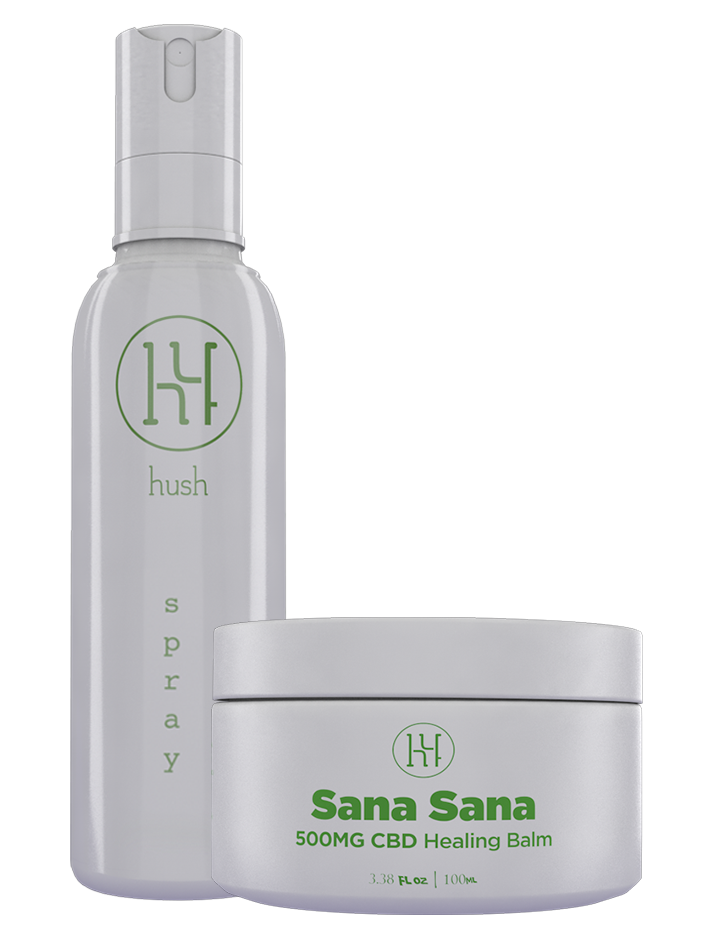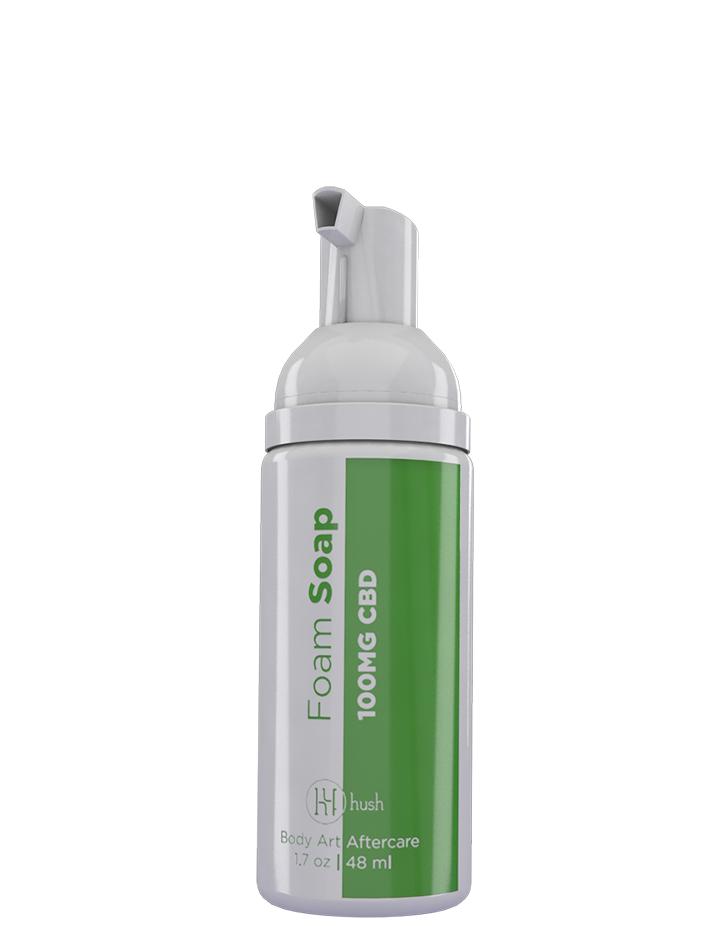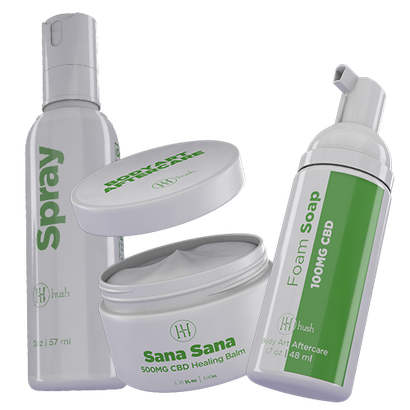
$45.99
You might be a little worried about the pain if you've never had a tattoo before. A needle is vibrating faster than your eye can see, depositing ink into your skin with hundreds of little rapid pokes per second.
Of course, you’re not thrilled at the thought of the process. Nothing about that seems fun (unless it does — we support you).
Tattoos do hurt, but they don’t hurt bad enough to stop people from getting them. About half of Americans under 40 years old have tattoos. According to the tattoo pain scale, many people have smaller tattoos in spots that are less likely to hurt.
The tattoo pain chart is a relative way to measure how much a tattoo in one spot compares to the pain you might feel if you got a tattoo in other parts of the body. If you’re nervous about the pain and considering tattoo placement, here’s what you should know.
Why Do Tattoos Hurt So Much?

It might not seem like the tattooing process should hurt a lot. You’re walking away with a clean and polished piece of art on your skin. It’s not a giant cut that needs stitches or a broken bone.
It’s a controlled process that uses very tiny tattoo needles to create a work of art on your skin, so what’s all this pain about?
Pain comes from two places: sensation from your nerve endings and how your body and mind react to those sensations. The two work together to create your pain tolerance, and it’s this tolerance that will determine how uncomfortable (or how easy) it is for you to get a tattoo.
Nerve Endings
There are more than 7 trillion nerve endings throughout your body. That’s how you feel what you feel. They’re responsible for relaying the pleasant warm sensation of a great cup of coffee on a winter morning. They’re also responsible for relaying the stabby sensation of a tattoo.
When something happens to your skin, your nerve endings tell your brain something is wrong. This is what creates the sensation of pain. While you’re getting a tattoo, your nerve endings tell your brain, “hey, someone is puncturing us,” and that’s where the pain sensation comes from.
Tattoo numbing creams with ingredients like lidocaine can disrupt your body’s ability to send the pain message to your brain. You’ll still feel your tattoo a bit, but the sensation won’t be as intense.
Lidocaine is a local anesthetic that numbs the area where it’s applied. Your nerve signals won’t be as strong for an hour or so, giving you plenty of time to sit through a small to medium-sized tattoo with decreased discomfort.
Emotional Components of Pain
A huge part of your pain perception is the way it relates to your emotions. Emotional discomfort and physical pain are closely linked.
Your emotional state can impact the way you experience pain. You’ll experience less pain if you’re calm.
If you’re anxious about your tattoo and the thought of pain alone freaks you out, you’ll probably feel much more pain. You’re combining a psychological “something is wrong” message with the physical “something is wrong” message your nerve endings are sending your brain.
This can make the situation more intense. Although it’s easier said than done, accepting the fact that your tattoo is going to hurt and that everything is going to be fine can reduce the amount of pain you feel.
Take it moment by moment and try not to focus on the sensation. Your tattoo artist won’t mind if you put your headphones on and listen to music that helps you chill out. They want you to be as comfortable as possible during your session.
The Different Types of Pain You May Feel During a Tattoo
There is no universal tattoo feeling. Some of the experience depends on your personal pain tolerance. The rest of the experience depends on the techniques your artist is using and the part of your body they're tattooing.
Warm Buzzing and Adrenaline
The second that machine starts buzzing, your brain and body start to respond. The needle hits your skin, and your body reacts by pumping out response hormones like adrenaline and endorphins.
That first prick may feel like a warm sting, but the sensation gradually transforms over the course of a few minutes. Things start to mellow. Your body numbs it out a little, and what you're left with is what most people describe as a dull ache.
It’s not constant agony. The discomfort is definitely noticeable, but it's more like background noise. You feel it, but it’s not yelling at you unless your artist hits a sensitive spot or works the same area for a while.
Vibrating Pain in Bony Areas
Getting a new piece on your ribs, spine, or collarbone? Welcome to the vibrating pain. This one’s weird because it’s not exactly painful in a traditional sense. It's like your bones are humming. It’s a deep, buzzing sensation that reverberates through your skeleton when the needle goes over spots with less muscle and fat.
Some people experience it less like pain and more like an irritating sensation. The vibration feels more like an uncomfortable tickle that makes you want to wiggle away. It may be hard to sit still.
Burning Pain Midway Through
Burning pain creeps in when your artist works on the same spot for a long time. It’s not sharp, and you don't necessarily feel the movements of the needle. It may feel hot and sore, almost like your artist is giving you sunburn with each pass. You’ll usually feel this during long shading sessions or when your tattoo is nearing the finish line.
Scratching Pain
Imagine a cat slowly dragging its claws across your arm. Now imagine it’s a robot cat that doesn’t stop. That’s scratching pain. It usually shows up when your artist is shading or packing color with multiple needles. It’s not unbearable, but it’ll definitely make you shift in your seat a little.
Sharp or Stinging Pain
Fine lines and outlines often mean your artist is using a single needle or a tight group of small ones. When that happens, you may feel a sharp stinging pain. It’s a crisp, zingy feeling, like getting popped with a bunch of tiny bee stings all at once.
This shows up most in places with tight or thin skin like your inner arms, wrists, the tops of your feet, and anywhere bony or bendy.
When Something Feels Too Sharp
Tattoo pain is one thing, but if it feels wrong, don’t ignore it. Extremely sharp or deep pain might mean your artist is going too hard or too deep with the needle. That’s not just painful. It can lead to a blowout, where the ink spreads beneath the skin and blurs out your linework. Yikes.
A seasoned artist knows how deep to go. If something feels off, don’t be afraid to speak up.
Is This Gonna Hurt?

If you’re the kind of person who prefers a direct answer: yeah, it’s gonna hurt. It’s just a matter of how much it will hurt.
Some tattoo spots hurt worse than others. Numbing gel can seriously take the edge off, even in really tender spots.
You also need to remember that everyone has a different pain threshold. If someone with a bunch of giant tattoos tells you they didn’t hurt, they may not be lying. The pain may not have been significant for them.
People with tiny tattoos who claimed they were excruciatingly painful may not be lying either. They may be especially sensitive to pain.
Our tattoo pain scale guide can give you a rough idea of what to expect in different areas, but your experience may differ. And it’s all okay and normal.
Face, Head, and Neck
Most people have less fat on their faces and necks. Tattoos on the forehead, the cheekbone, and the temple are close to a ten on the pain scale.
You also have to factor in the fact that getting tattooed on your face feels much more intrusive than getting tattooed on the arm. It might make you a little more anxious or jittery, which can increase your perception of pain. Oh, and it’s loud.
The neck might be slightly easier because the sides of the neck are mostly muscle. A tattoo on your scalp may hurt slightly less than a tattoo on your face because your scalp skin is thicker and sturdier. These spots are closer to an eight on the pain scale.
Ribs, Chest, Hips, and Lower Back
Lower back tattoos tend to hurt less further away from the spine and worse at the center of the back. It’s a spectrum of pain. While the outer portions of the back may rank closer to a six or a seven on the pain scale, expect the parts near your spine to rank closer to an eight or a nine.
The pain becomes intense again as you travel to the hip bone. A hip tattoo directly on the bone can climb as high as a ten on the pain scale, especially if it’s a large tattoo.
Tattoos on the ribs, sternum, and collarbone are always closer to a ten on the pain scale. The skin is very thin in these areas, and the bone is prominent. You might even feel a little bit of the vibration from the tattoo machine throughout the whole area.
We have a weird fact about rib cage tattoos: some people think it tickles, especially for shorter tattoo sessions. If you have very ticklish ribs, the vibration from the tattoo machine may shift your brain’s perception to a constant tickling rather than the perception of tattoo pain.
While a tickle won’t hurt, it’s definitely difficult to attempt to stay still when you feel like someone won’t stop tickling your ribs.
Forearm, Hand, and Wrist
Tattoos on the forearm hurt slightly less than tattoos on the wrist or hand. On the pain scale, expect your forearm to be about a six or a seven.
If your forearm tattoo reaches your elbow or the part where your arm bends into your elbow, expect the pain to rise significantly. Your elbow might reach a ten, and the “ditch” of your arm could reach an eight or a nine.
The bones of your wrist and hand are prominent. These areas can climb up to a ten on the pain scale. A hand tattoo will cause greater pain than a tattoo on your inner wrist.
Areas of your body with a thin layer of skin and virtually no fat on top of bone are usually the most painful places to get a tattoo.
Bicep and Shoulder
Biceps (or upper arm area) and shoulders are a six or a seven on the tattoo pain scale, except for the shoulder blade. Your shoulder blades are covered in thick skin, but if you have prominent bones, you might notice that the area hurts a little worse.
The outer bicep is usually one of the least painful spots. The thin skin of the inner bicep might be slightly more uncomfortable. Armpit tattoos are almost always a terrible idea. The armpit is one of the most painful areas to get a tattoo.
There are lots of nerve endings that will send jolts of pain down your sides. It’s also very difficult to manage the healing process of an armpit tattoo due to the bacteria that naturally accumulate there.
Thighs and Glutes
Tattoos on your thighs and glutes are the least painful places to get a new tattoo. These places are well-padded with layers of muscle and fat. You won’t feel the needle as much.
Many people would describe these areas as a six or a seven on the tattoo pain scale. They’re great places for a first tattoo.
Your outer thigh might hurt less than your inner thigh, where the skin is thinner. Your upper inner thigh (near your groin) is one of the most sensitive areas of your body. Skin touches and rubs against other skin in this area, which might cause complications with the healing process and proper tattoo aftercare. Be mindful if your inner thigh tattoo goes up very high.
Knees, Shins, Ankles, and Feet
This is the bony part of your leg, and any time there’s little padding between skin and bone, your tattoo will hurt worse. Many people will swear that a kneecap tattoo is one of the worst things they ever voluntarily signed up for.
Without numbing products, these spots are some of the most brutal places to get a tattoo. These spots are closer to a ten on the pain scale.
HUSH Can Help You Experience Less Pain
Hush Anesthetic’s tattoo products contain skin-healthy ingredients like aloe, CBD, and botanical extracts. We use lidocaine in our numbing gels, creams, and topical sprays to ease the uncomfortable sensation of a tattoo.
Use our session bundle to minimize pain while you’re getting a tattoo. Use our aftercare spray to dull the itchy sunburn feeling that comes during the healing process.
Sources:
Nearly Half of Americans Under 40 Have Tattoos | Rasmussen Reports
Pain and Emotion: A Biopsychosocial Review of Recent Research | National Library of Medicine





